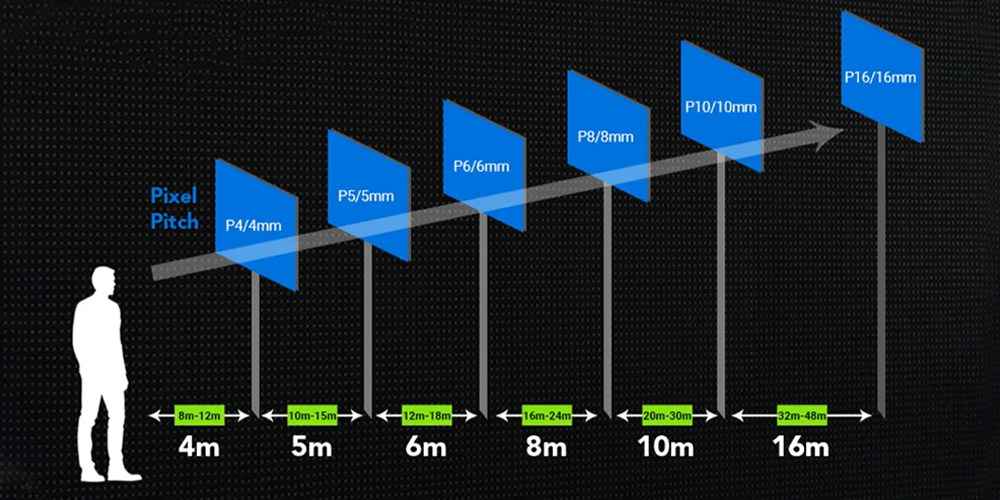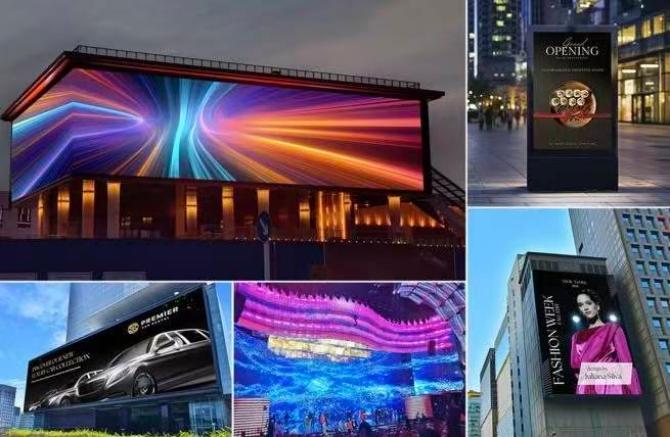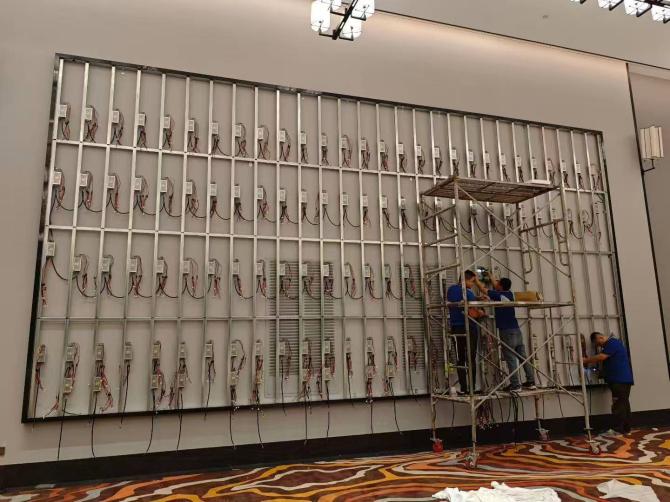一、The first and the most important step is: Where is the led display installed?
Indoor or outdoor? This is the most fundamental difference, which determines the key characteristics of the display such as brightness and waterproof level.
1.For indoor: Conference room, KTV, Lecture hall, Stage background, Shopping mall advertising, Information release, School information wall, Monitoring command center…
2.For outdoor: Building exterior wall advertising, Stadiums, Highway advertising, Bus screens, Store signs, square stages, traffic signs…
二、What is the viewing distance? What is the most comfortable viewing distance?
1.For example, the viewing distance of P2.5 indoors is about 5 meters, and the most comfortable viewing distance is about 2 to 3 meters.
2.For example, the minimum viewing distance for outdoor P2.5 is 5 to 10 meters, and the most comfortable viewing distance is about 2.5 to 3.5 meters.
Whether indoors or outdoors, pixel is the only core parameter that determines the viewing distance, the smaller the pixel value, the denser the pixels, and the clearer the close viewing distance. The best distance to view pixel is clarity indoors and brightness and protection outdoors.
三、What is your budget? Your budget determines the product range and technology you can choose , such as conventional LED or fine pitch LED
1.For tiny pitches like P0.9 to P2, integrating more led lamp beads, driver ICs, and circuits in a unit area places extremely high demands on production processes, materials, and yield rates, and high end driver ICs are used with a high refresh rate greater than or equal to 3840Hz, which greatly reduces scan lines and water ripples during camera shooting, and his makes it suitable for conference live broadcasts and broadcasting applications, and high grayscale levels make color transitions smoother and more natural, especially when displaying dark scenes, with richer details and no discontinuities, and tnd more energy efficient and generates less heat.
2.In addition, the cabinet is made of die cast aluminum, rather than ordinary sheet metal cabinets, and he mold cost is high and the material itself is more expensive, and he precision is extremely high, Besides, the surface flatness of the screen after splicing is unparalleled, and the seams are almost invisible, it has good heat dissipation performance, is light weight, and has high strength. It is suitable for quick assembly and creative modeling. In addition, there is no need to reserve a maintenance channel from the back of the screen. The module or cabinet can be disassembled and maintained directly from the front.
3.Making small pitches under the premise of requiring high brightness outdoors poses a hellish challenge to the weather resistance, heat dissipation capacity, packaging technology and waterproof structure of the lamp beads, resulting in low yield rate, and the use of black light or imitation black light technology has more complicated processes and higher material costs, and the black surface can absorb more ambient stray light, making the screen present a darker background, brighter colors and higher contrast even under direct sunlight, making the picture more transparent, it supports high refresh rates greater than or equal to 3840Hz and adopts static drive or low scanning mode, static drive requires the number of ICs to increase exponentially, which is extremely costly.
4.In addition, the protection level of the module and the cabinet must reach IP65, and achieving a high level of protection requires precise sealing design, such as the use of high quality silicone sleeves, glue injection technology, waterproof rings, which have higher material and process costs, it fundamentally prevents the intrusion of rain and dust, ensuring that the screen can still work stably in severe weather such as heavy rain and sandstorms, and the cabinet is made of one time die cast aluminum instead of an ordinary sheet metal cabinet. Besides, aluminum has excellent thermal conductivity and can quickly dissipate internal heat into the air, it is the key to the longevity of the screen and reduces the load-bearing requirements on the building walls. At the same time, the structure is sturdy and has strong wind resistance.

四、What are the restrictions on the installation environment, installation space dimensions, load-bearing capacity, maintenance convenience?
1.The temperature and humidity of indoor display screens must be within a reasonable range, and outdoor environments must be able to withstand all kinds of severe weather and direct sunlight during the day. Besides, the screen brightness must be extremely high, and wind load resistance, earthquake resistance, and space dimensions must be considered to determine the screen size, installation method, and maintenance convenience, and the installation area must be greater than or equal to the net display area of the display screen.
2.Rear maintenance is limited: If the screen is installed against the wall and there is no space on the back, rear maintenance is not possible. Front maintenance requirements: Front maintenance of the screen requires a special installation structure, which is slightly more expensive. Besides, before finalizing the plan, professional led display suppliers and structural engineers need to conduct on site surveys and issue detailed installation environment survey reports and structural design drawings.


